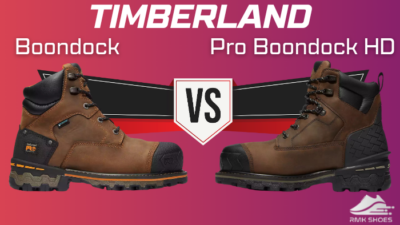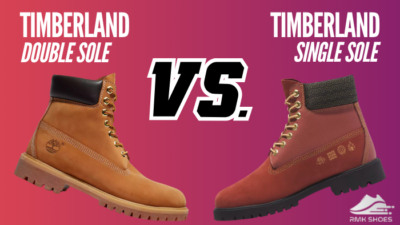Nike’s Pegasus lineup offers the best affordable, durable, and comfortable running shoes for versatile running needs.
Among the 40 models of this shoe lineup, Pegasus 36 & 37 share several similar characteristics but differ in multiple aspects.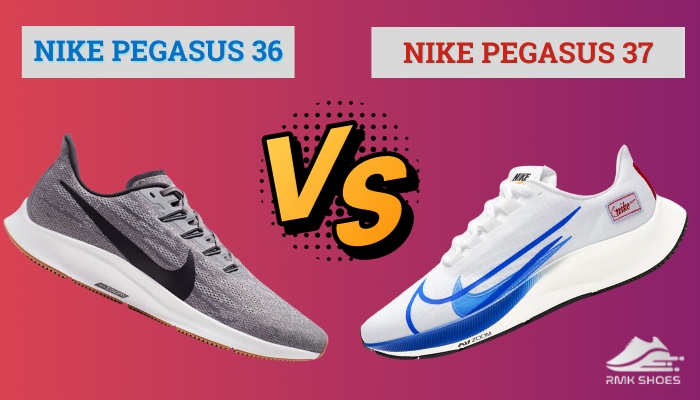
So. let’s deep dive into a full comparison of Pegasus 36 and Pegasus 37 to track down the most appropriate one.
Overview of Nike Pegasus 37 and Nike Pegasus 36
Nike introduced the Pegasus lineup in 1983, making it a reliable and affordable running shoe for a broad range of runners.
Since then, Nike has presented 40 versions of the Pegasus shoes, each with unique properties and characteristics.
Nike Pegasus 36
The Pegasus 36 is the 36th version of the Nike Pegasus line, which offers multiple enhancements and newer technologies than the predecessor Pegasus 35.
For the upper construction, Pegasus 36 utilizes engineered mesh with Flywire cables.
The midsole of this shoe is made from Cushlon foam and Zoom Air units, providing a firm and comfortable ride for various runs.
Its durable rubber outsole with zonal support is extremely capable on various surfaces like tracks, roads, or treadmills.
Utilizing the mesh upper and rubber outsole, it features excellent stability.
Nike Pegasus 37
Without a doubt, the best jump from the earlier version is the midsole tech. Instead of the Cushlon foam, Nike chooses the hyped React foam to construct Pegasus 37.
This new midsole is more comfortable and responsive, which I noticed on the first outing.
On Peg 37, Nike embedded the Zoom units on the front. This front-loaded air unit makes this shoe more capable on uneven surfaces like hills or river banks.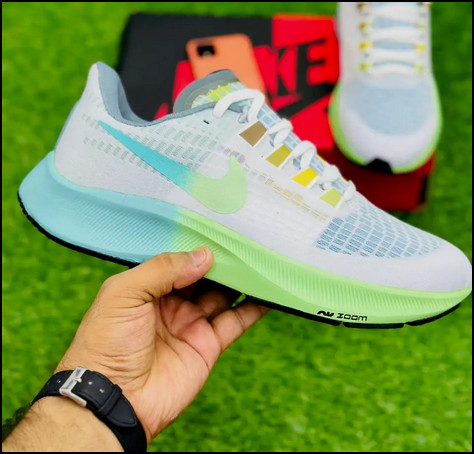
Nike also retouched the upper and chose engineered mesh with translucent.
Frankly, this new upper is more breathable, but it has a narrow fit, especially on the forefoot.
Both shoes are true-to-size and have the same heel-to-toe drop. However, while the Pegasus 36 is more stable, the Pegasus 37 is comparatively more flexible and offers more mileage.
Attribute Comparison of Nike Pegasus 37 & Nike Pegasus 36
Regardless of their similar origin, both shoes offer distinct attributes. Nike retouched the already great Pegasus 36 model and improved it with the newer Pegasus 37.
The most noticeable improvements are in the upper, midsole, and overall comforts. By comparing both shoes, you can better visualize their features and characteristics.
So, let’s perform a head-to-head comparison for more clear insights.
| Attribute | Nike Pegasus 37 | Nike Pegasus 36 |
|---|---|---|
| Release Year | 2020 | 2019 |
| Upper | Engineered mesh with BANDS | Engineered mesh with Flywire cables |
| Midsole | React foam with Zoom Air unit | Cushlon foam with Zoom Air unit |
| Outsole | Durable rubber with flex grooves | Durable rubber with zonal support |
| Comfort | Plush and comfortable | Comfortable and responsive |
| Weight | 9 oz | 8.9 oz |
| Fit | True-to-size | True-to-size |
| Heal-to-Toe Drop | 10 mm | 10 mm |
| Forefoot Stack Height | 18 mm | 13.5 mm |
| Heel Stack Height | 28 mm | 23.5 mm |
| Flexibility | More flexible | Slightly less flexible |
| Stability | Moderate stability | Good stability |
| Best for | Racing, speedwork, daily training, long-distance runs | Speedwork, daily training, short or mid runs |
Differences Between Nike Pegasus 37 and Nike Pegasus 36
I found multiple significant differences after using both shoes for my day-to-day runs. It’s difficult to understand these major and minor divergences by staring at the above comparison chart.
So, let’s compare the features and offerings of both shoes to identify the perfect pair.
1. Upper: Design & Materials
The upper part of Pegasus 36 has Engineered mesh with Flywire cables, which provides optimal breathability and flexibility.
I am a big fan of the Flywire cables due to their secure fit and comfort.
But some may find this Flywire a little unpleasant. Nike heard the concern and introduced a new lacing system called BANDS for the Peg-37.
Pegasus 37 also has a similar engineered mesh upper but with a twist.
The upper of Pegasus 37 features a more minimalistic design than its predecessor.
The heel flair is a little shorter on Pegasus 37. Its plush cushioned heel counter ensures excellent comfort and secure fit.
However, on my first run wearing the Peg-37, it was somewhat more slippery, but after some struggle, I found the perfect lacing system (runner’s knot), and the slippery problem was gone forever.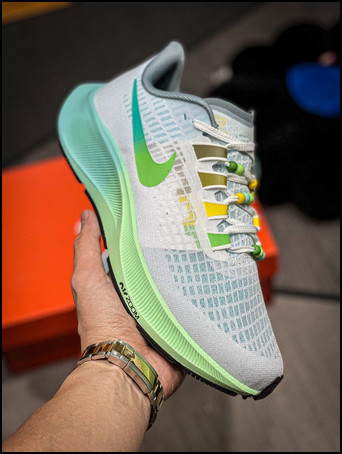
Overall, both shoes share similar upper contractions with a distinct lacing system.
2. Midsole and Outsole
Undoubtedly, the midsole was the most significant update from the 2019 to 2020 version.
Pegasus 36 features the Cushlon foam, which has a bad reputation for being less responsive and feels a little heavy, making the shoe inappropriate for long distances and fast paces.
Nike’s answer to this problem was to use React foam through the entire midsole of the Pegasus 37 along with the Zoom Air unit.
Another exciting change in the midsole is the utilization of the Zoom Air unit.
Nike Peg 36 features a full-length Zoom Air bag (4 mm thick) for the entire midsole, but in Peg 37, Nike uses a Zoom Air unit only in the forefoot.
Surprisingly, the Zoom Air unit of the Pegasus 37 is more closer to the foot, which I felt with every stride.
Most importantly, the Zoom Air unit is 10 mm thick on Peg 37 instead of the 4 mm of Peg 36.
This larger air unit of Pegasus 37 provides enhanced energy return and a snappier feel.
If you’re looking for a marathon shoe from Nike, you can check the comparison of Nike Air Zoom Vomero and Pegasus.
Now, let’s focus on the outsole.
Both shoes share very similar outsole materials and designs (waffle pattern). The only difference is in the lug patterns in the heel section.
Pegasus 37 has a more aggressive lug pattern and translucent rubber outsole, which is more gripping on various surfaces.
In short, Nike Pegasus 37 surpasses the predecessor Pegasus 36 in midsole technology and better traction on various terrains.
3. Comfort and Fit
The clash between these shoes becomes more evident regarding their comfort and fit.
As mentioned earlier, Pegasus 37 utilizes straps, a flexible upper, and a responsive and cushioning midsole to provide a secure fit and remarkable comfort.
I have completed 100 miles wearing both shoes and noticed significant changes in the overall comfort and fit.
For instance, I prefer the forefoot fit of the Pegasus 36 due to the wider construction.
On the contrary, Pegasus 37’s forefoot is moderately narrow and has an extended break-in period for optimal comfort.
Fortunately, the mesh upper slightly stretches over time, ensuring a more secure fit.
Without a doubt, both shoes are true-to-size.
But the narrow forefoot of the 2020 version is less accommodating than the comparatively wider toe box of the 2019 version.
But depending on your feet, you can choose between narrow, regular, wide, or extra-wide versions.
Surprisingly, in the 38th version, Nike utilizes a firmer density of the React foam; for a clear understanding, check the head-to-head comparison of Nike Pegasus 38 and 39.
In short, the Nike Pegasus 37 surpasses the 36 with incredible cushioning, responsiveness, and a more secure fit.
However, if you’re a more forefoot striker, Pegasus 36 is the best pick.
4. Performance & Durability
Both shoes excel in terms of performance and durability, but each leans towards specific strengths.
For instance, model 37 excels in high-mileage runs and long distances due to the extensive cushioning and responsiveness.
I frequently ran wearing the Pegasus 37 and became a fan of its high-energy return.
As a neutral runner, I felt the lack of stability during fast pace runs.
However, the additional flex grooves of the outsole provide extraordinary grip even on muddy or wet surfaces.
Contrarily, Pegasus 36 is preferable for everyday training runs.
But its firmer cushioning is not what you seek from a high-mileage running shoe.
The best thing about the 36 is its full-length Zoom Air, which is highly stable and will never let you feel unforgettable or unstable, regardless of the surface.
The overall durability of both shoes is almost identical, yet there is a twist.
The React foam midsole of Pegasus 37 can counter the easy breakdown and maintain cushioning year after year.
On the other hand, the Cushlon foam of Pegasus 36 is more vulnerable and breaks easily over time.
Fortunately, the outsoles of both shoes are incredibly durable.
Undoubtedly, you can depend on them; both shoes will provide a minimum of 400 mileage if appropriately maintained.
In summary, both shoes offer good durability for their intended use. However, for high mileage and cushioning, the Pegasus 37 is the best pick, and for tempo runs and faster paces, go for the Pegasus 36.
5. Stability and Flexibility
In terms of stability, the test result was astonishing.
With all the significant improvements, such as a wider platform and internal shank, Pegasus 37 offers moderate stability.
But the Pegasus 36 is more stable, thanks to its firmer midsole and full-length Zoom Air unit.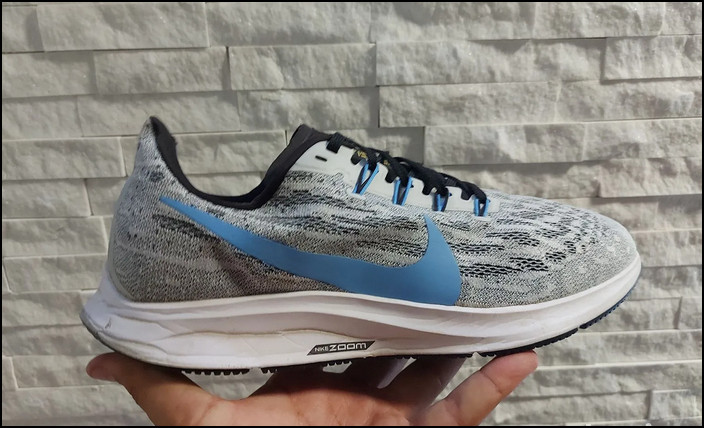
I enjoyed the smoother platform transition and the control of Peg 36, allowing me to run more miles without feeling tired or unstable.
The overall flexibility of both shoes also surprised me.
Undoubtedly, the Pegasus 37 surpasses the 36’th version in terms of flexibility.
The higher stack height and the flex grooves of Peg 37 ensure more flexibility, allowing natural foot strike and better performance on various terrains.
On the contrary, the lower stack height of Peg 36 is responsible for its lower flexibility, but it offers a more structured ride and better ground feel that I enjoyed for faster paces.
While the Pegasus 36 outshines the 37’th version with more stability, the Pegasus 37 offers more flexibility than its predecessor.
Pros & Cons of Nike Pegasus 37 and Nike Pegasus 36
While both shoes have unique features and offerings, they are not untouched by advantages and disadvantages like any other prominent shoes.
So, let’s find out the pros and cons of both shoes before finalizing your purchasing decision.
Nike Pegasus 37
- »Great combination of React Foam and Zoom Air units.
- »Breathable engineered mesh upper.
- »Suitable for various types of runs.
- »More durable midsole construction.
- »Reliable traction on various surfaces.
- »Suitable for runners with neutral or mild overpronation.
- »Slightly heavier due to the increased cushioning.
- »Unsuitable for treadmill runs or track training.
Nike Pegasus 36
- »Lighter and more nimble.
- »Neutral platform with good stability.
- »Comfortable and breathable upper.
- »Smooth and stable ride.
- »Suitable for various types of runners.
- »Wide range of color options.
- »Limited arch support.
- »The fabric folds around the heel.
Nike Pegasus 37 Vs Nike Pegasus 36: Which One is More Advantageous?
While the 37th version is more advantageous than the other in some aspects, the 36th version also excels in several sectors.
As the upgraded model of version 36, the Peg 37 has several advantages, such as more modern looks, premium materials, better design, and more cushioning.
But both shoes are available for around $120.
So, choosing the best running shoe from the same brand lineup highly depends on your preferences and running styles.
If you prioritize versatile shoes for speedwork, daily training, and tempo runs with a consistent ride, the Nike Pegasus 36 is a great choice.
But if you are looking for a responsive shoe made for various runs, comfortable on long distances, and offers a more secure fit, pick the Nike Pegasus 37.
Frequently Asked Questions
Is the Pegasus 37 suitable for long-distance running?
Nike Pegasus 37 is a prominent running shoe that offers a good balance of cushioning and responsiveness, making it suitable for tempo and long-distance runs. However, there are some stability issues with this version.
Are Nike Pegasus 37 and 36 waterproof?
Nike Pegasus 37 Shield and Pegasus 36 GTX are water-repellent shoes that keep your feet dry in cold weather. The upper’s water-repellent reinforcement and waterproof membrane are lightweight and breathable without compromising the waterproof feature.
Is Pegasus 36 good for running?
Nike Pegasus 36 is a versatile running shoe for short and mid-distance racing. Due to its comfortable fit and padded cushioning, you can use it as your daily trainer and efficiently run various distances.
How long does the Nike Pegasus 37 last?
The Engineered mesh upper and durable rubber outsole of Pegasus 37 usually last 300-500 miles. After completing my 100 miles, I didn’t see any noticeable degradation. If handled with care, you can expect a lifespan of 500 miles.
What is the latest version of Pegasus?
Nike Pegasus 40 is the latest version of the Pegasus lineup that features several upgrades over the predecessor Pegasus 39. Moreover, Nike has scheduled the release of the Nike Pegasus 41 in April 2024 with multiple improvements over the Pegasus 40.
Is Nike Zoom Pegasus 37 or 38 better?
Nike Zoom Pegasus 38 is plusher compared to its predecessor Pegasus 37, which ultimately features more cushioning and suits long-distance runs with excellent energy return. However, the upper of the Pegasus 37 feels more comfortable than the Pegasus 38.

